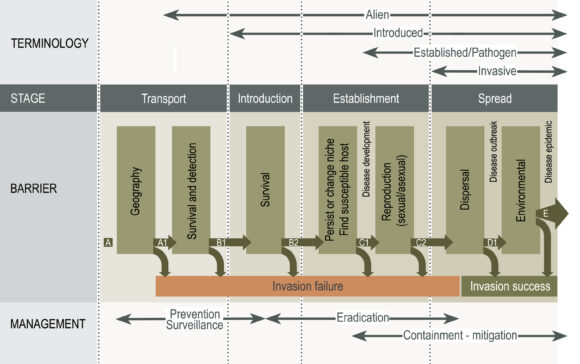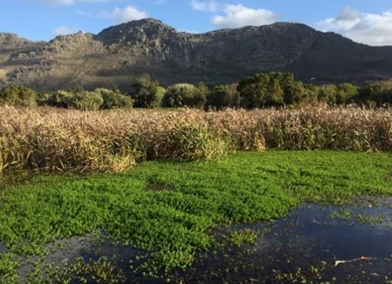Biological invasions are significant drivers of global environmental change and present a growing threat to biodiversity, ecosystem services, economies and human health. Invasive alien species are represented by organisms across all taxonomic groups, however, invasion science has focused mostly on plants and animals. Microorganisms are relatively poorly represented in the invasion science literature, despite pathogenic microorganisms consistently being ranked amongst the most damaging invasive species. In particular, invasive forest pathogens have led to disastrous disease epidemics, which have completely altered planted and urban forests and natural woody ecosystems (Figure 1). Well known examples include chestnut blight in the United States and Europe, ash die-back in Europe and Phytophthora die-back in southwest Australia.
A challenge to the discipline of invasion science has arisen in that researchers studying different taxonomic groups have developed distinct ways of investigating the phenomenon of biological invasions. Efforts have been made to reconcile these differences, notably in the proposed Unified Framework for Biological Invasions of Blackburn et al. (2011; Trends in Ecology and Evolution 26: 333-339 doi:10.1016/j.tree.2011.03.023). However, this framework was largely developed to merge definitions and processes for studying plant and animal invasions, and practical difficulties arise when applying the framework to microorganisms.
A paper recently published in the journal Current Forestry Reports documents a collaboration between the Forestry and Agricultural Biotechnology Institute (FABI) at the University of Pretoria, the South African National Biodiversity Institute, the Centre for Invasion Biology, and other international collaborators, including prominent forest pathologists and invasion scientists. The study, Led by Dr Trudy Paap from FABI, sought to advance the study of invasive forest pathogens by proposing a modified version of the Unified Framework, to better accommodate invasive forest pathogens (Figure 2). The authors interrogated the key challenges encountered when studying microorganisms as invasive species. They note that the lack of knowledge of microbial biodiversity and ecology, speciation and geographic origin has hampered researchers seeking to understand invasive forest pathogens under existing frameworks.
Dr Paap says, “In proposing the revised framework and highlighting the challenges and areas of research needed, we hope to align the work of forest pathologists more closely with that of invasion scientists.” She adds “With a clearer understanding of how microorganisms move around and the stages they pass through to become invasive, we hope that forest pathologists will better understand how and why invasions occur, and importantly, where, when and how invasions can be stopped or mitigated.”
Read the paper in Current Forestry Reports:
Paap T, Wingfield MJ, Burgess TI, Wilson JRU, Richardson DM, Santini A. 2022. Invasion frameworks: a forest pathogen perspective. Current Forestry Reports. https://doi.org/10.1007/s40725-021-00157-4
For more information, contact Trudy Paap at trudy.paap@fabi.up.ac.za





